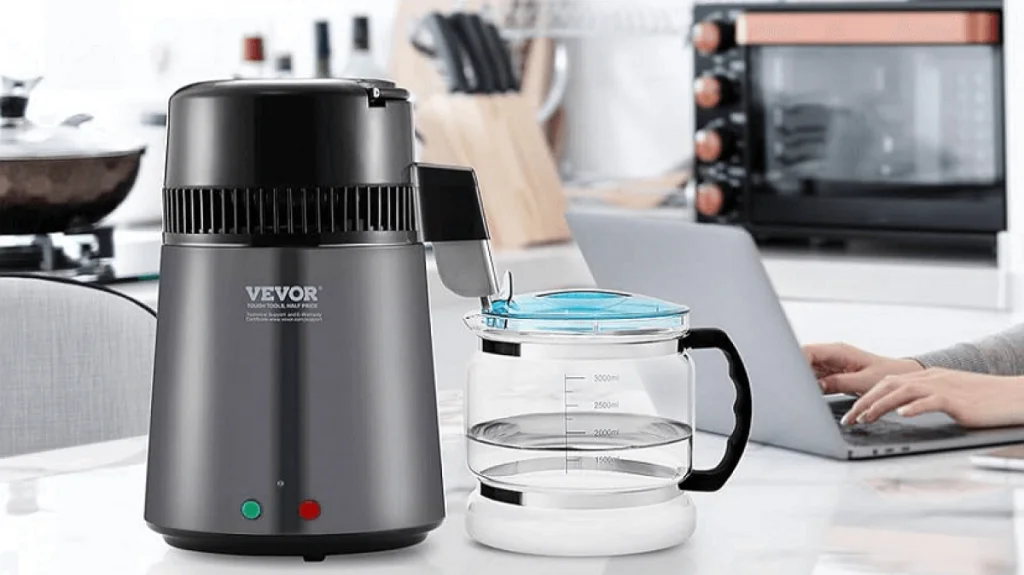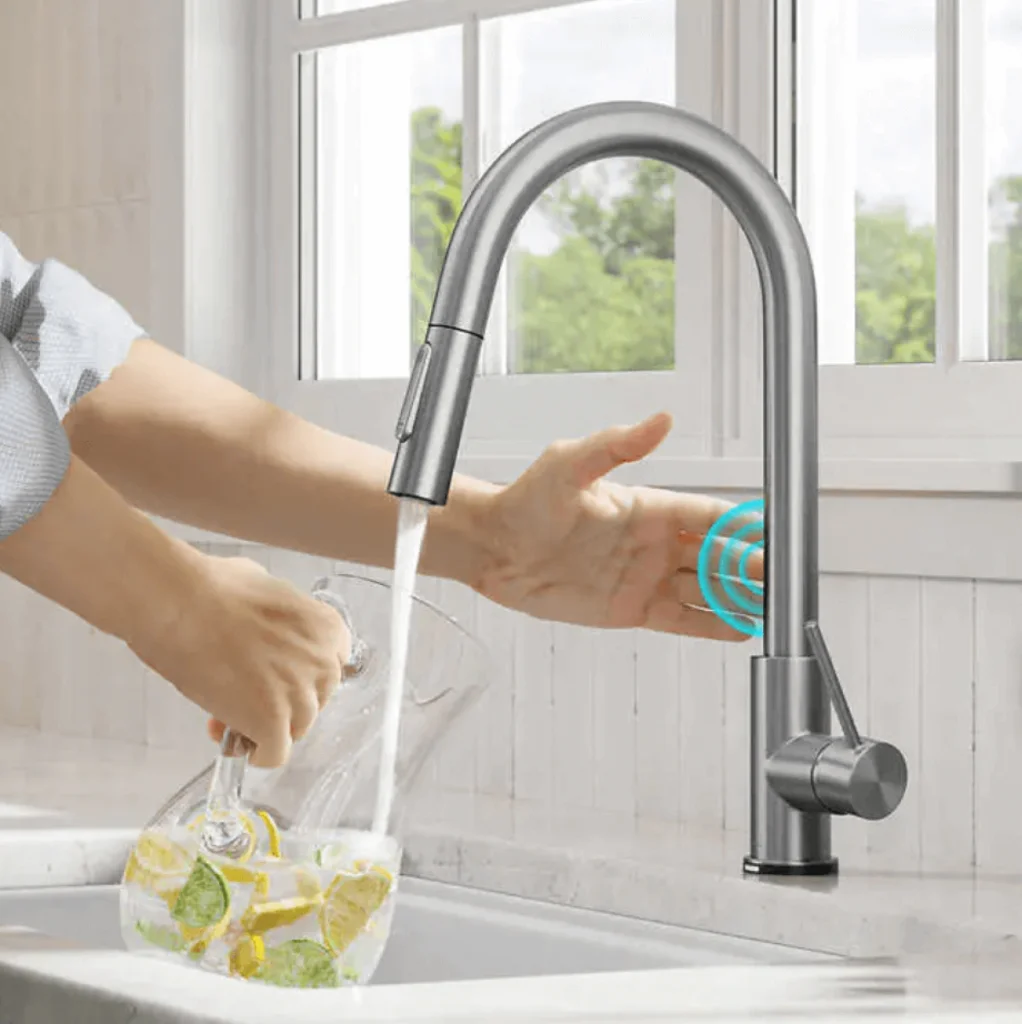Clean and safe drinking water is imperative for maintaining good health. Water distillers help ensure that the water that we consume is free of impurities and contaminants. That said, simply having a distiller in place is not enough. If not cleaned, impurities like bacteria, germs, and mineral deposits can build up over time and compromise the quality of distilled water produced. So what you need is a clean water distiller.
To ensure that your water distiller continues working optimally and producing clean drinking water for many years to come, you will have to clean it regularly to remove any buildup, which could not only hamper the performance of the distiller but also impact the quality of the produced water.
If you do not know how to clean water distiller, continue reading. In this guide, we are going to discuss everything about cleaning a water distiller.
So, let’s get started!
Why Regularly Cleaning a Water Distiller is Important?
Water distillers are reliable devices designed to purify water by boiling it, collecting its steam, and condensing it back into liquid form. With every distillation cycle, residue tends to accumulate within the boiling chamber, necessitating regular cleaning. Here are a few reasons why you should clean your water distiller regularly:
- Prevent Contaminant Buildup
Over time, bacteria, germs, organic matter, and mineral deposits build up inside the distiller. This contaminant buildup not only jeopardizes the performance of the distiller but may also contaminate the clean distilled water.
- Maintain Efficiency and Extend Lifespan
Hardness elements such as calcium and magnesium removed from the water during the distillation process can cause limescale buildup in the boiling chamber. If not cleaned regularly, this limescale buildup would hamper the efficiency of your water distiller. The residue buildup could also clog filters and restrict the water flow, which will hinder the distillation process. If operated without regular cleaning, the lifespan of the distiller will also be cut short.
- Prevent Fire Hazard
If the distiller is not cleaned regularly, the residue buildup will keep getting thick, making it difficult for the heat from the heating elements to pass through and heat the water. This will make your distiller consume more energy to convert the water into steam. Also, this will increase the risk of overheating the distiller, posing a fire hazard.
- Ensure Water Quality
If the water distiller is not cleaned regularly, impurities and residue will tend to build up in the boiling chamber, increasing the risk of contamination of the clean distilled water. The distiller may also start producing odorous or off-tasting water.

Signs That Your Distiller Needs Cleaning
When the distiller is being used regularly, it is wise to have a cleaning schedule, which ensures proper maintenance without the need for constant monitoring. However, if you do not follow a cleaning routine, below are specific signs indicating that you need to clean water distiller:
- Cloudy or Discolored Water: Distilled water needs to be clear and transparent. So, if your distiller produces cloudy or discolored water, you must clean it and eliminate buildup impurities inside the boiling chamber.
- Off-tasting or Odorous Water: If your water distiller is giving off a foul smell, it means that there could be mold or bacterial growth within the container, and it needs to be cleaned. Also, if the water produced by the distiller has an unpleasant taste or odor, it could be a sign of the presence of impurities due to a lack of regular cleaning.
- Slow Distillation: If the distillation process seems significantly slower, this could be a sign of mineral deposits or impurities obstructing the heating elements. Plus, if the water flow from the distiller is slower than usual, there might be clogging due to accumulated contaminants. So, cleaning might be the fix if your distiller is not performing at an optimum level.
- Strange Noises or Vibrations: Unusual noises or vibrations during operation could indicate a buildup of scale or debris on components in your distiller. If ignored, this will not only affect the performance of your distiller but could also cause damage, requiring costly fixes and shortening the distiller’s lifespan in the long run.
Tools and Supplies You’ll Need to Clean Water Distiller
For cleaning a water distiller, you will need the following tools and supplies:
- Water Distiller Cleaner: To clean the water distiller effectively, you will need a water distiller cleaner that usually comes with the water distiller. With VEVOR 1.1 Gal Water Distiller, we offer a bottle of water distiller cleaning powder.
- Carbon Filters: You will need a carbon filter to replace the one at the water outlet for maximum purification and taste adjustment. At VEVOR, we offer three packs of replaceable carbon packages with our water distillers.

- Non-abrasive Sponge: You will need a soft, non-abrasive sponge to clean the boiling chamber after every cycle to reduce limescale and contaminant buildup.
- Water: You will also need water to clean the water distiller.
Recommended For Your Project
How to Clean Water Distiller? Step-by-Step Cleaning Process
Cleaning your water distiller regularly will ensure it operates at peak performance, providing pure drinking water. Follow the simple steps discussed below to effectively clean your distiller.
Cleaning the Boiling Chamber
Step 1: Prepare the Distiller for Cleaning
Before cleaning the water distiller, ensure it is unplugged and completely cooled off. Also, empty any remaining water or residue in the boiling chamber.
Step 2: Fill the Boiling Chamber
Fill the boiling chamber with hot water or regular tap water. If the water is not hot, the cleaning process would just take a bit longer as it will have to heat it to the boiling point.
Step 3: Add 2 Tablespoons of Water Distiller Cleaner
Now add about two tablespoons of water distiller cleaner to the water and connect it to power. Leave the condensing fan off the unit and turn it on.
Step 4: Let the Water Boil
Let the water boil for about 30 minutes, or as the manufacturer recommends, turn off the power and let the water cool down.
Step 5: Empty and Wipe the Boiling Chamber
Once the water has cooled down, empty the chamber and wipe off the remaining residue with a soft, non-abrasive sponge. After wiping, rinse the chamber with clean water to ensure that there is no trace of contaminants left behind.
Cleaning the Distiller Lid—Condensing Chamber
Now that you have cleaned the boiling chamber, let’s clean the condensing chamber.
Step 1: Remove Plastic Housing
To begin cleaning the condenser chamber, you need to remove the seal first, but before you do that, remember the way it goes back on. Next, unscrew the three Philips head screws, and the plastic cover will come off.
Step 2: Remove the Fan
The fan is firmly attached to the spindle, so you will need to get another person to hold the chamber against their body as you remove the fan by holding it with both hands and giving it a gentle yet hard jerk.
Step 3: Remove and Clean the Condensing Tube
To remove the condensing tube, gently push it from the hole in the lid and then pull the tube from the other side from the end that goes into that hole.
Step 4: Clean the Fan and Chamber Cover
Now, immerse the fan and the chamber cover in warm, soapy water solution for a while. Then, take each out and scrub them with a sponge.
Step 5: Clean the Condensing Tube
Do not immerse the tube in water or a cleaning solution. Instead, place the tube under a running tap and gently scrub it with a soft brush or sponge.
Step 6: Reassemble
After cleaning, wipe all components dry before putting them back.

Tips for Preventing Excessive Mineral Buildup
Excessive mineral buildup can mess up the performance of your water distiller, reduce its lifespan, and affect the quality of the water produced. Here are a few helpful tips to prevent excessive mineral buildup:
- Leave Some Water Behind: Do not empty the tank completely at the end of each distillation cycle. Instead, leave some water at the bottom. This will reduce the limescale buildup in the boiling chamber.
- Clean Regularly: To prevent excessive mineral buildup, you should consider cleaning the water distiller regularly. If you are out of water distiller cleaner powder, consider cleaning the water distiller with vinegar. Simply add some vinegar to the water instead of cleaner powder, give it a boil, and then wipe it clean.
- Use Water Softener: If you live in a hard water area, consider using a water softener for the water you will be putting into the distiller.
- Pre-filter the Water: To remove large particles and sediments from the water, consider running it through a pre-filtering system before putting it in a distiller to prevent excessive mineral buildup.
FAQs about Cleaning a Water Distiller
1. How Often to Clean Water Distiller?
Generally, you should clean your water distiller once a month, but much depends on the hardness and quality of the water and frequency of usage.
2. Can I Use Commercial Descalers for Cleaning?
Yes, commercial descalers may be used when cleaning a distiller. But before using any commercial descaler, refer to the user manual and ensure it is compatible.
3. What If I Notice Rust Or Corrosion?
If it is actually rust, you can remove it using vinegar. However, you usually think rust or corrosion is mere discoloration due to the chromium oxide patina that forms on the surface of the metal during the welding process. And worry not; it only further protects the tank from rust and does not affect the quality of water.
Conclusion
Cleaning a water distiller regularly is imperative to ensure that the water it produces is clean and continues working at an optimum level for many years. Reading our guide “How to Clean a Water Distiller? The Ultimate Guide!” you would have learned that it is very easy to clean a water distiller. As soon as you identify any signs of contamination, you should gather the supplies and give them a thorough cleaning. Besides descaling the boiling chamber, you must also regularly clean the condensing chamber, ensuring electrical stuff does not get wet.
If you are looking to get a water distiller, consider checking out the VEVOR water distiller collection. They are highly efficient, durable, and easier to clean.
Ensure that you and your loved ones get healthy distilled water for many years to come.





